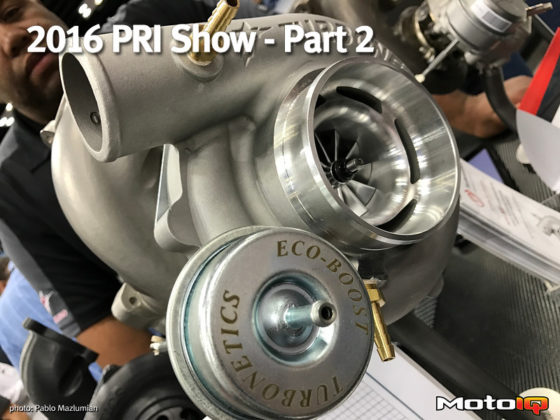,

The CSF heat exchanger installed on our car! We also added the optional mesh screen as this will take a lot of abuse during the 25 Hours of Thunderhill.
Horsepower is only half the battle though in racing. Cooling is number one on our list of priorities in endurance racing, especially on a turbocharged car. For the time attack guys (and girls), they just need to last 1-3 laps. The normal track day enthusiasts, their target is 20-30 minutes, but for us we need to be able to run this car hard for 25 hours straight and you can bet that if we can figure out cooling on our car, we have figured it out on any F8X M4. Not only does cooling allow us to race the entire 25 Hours of Thunderhill but also it’s what keeps our drivetrain safe, reliable, and operating at peak efficiency.
Fortunately for F8X M3/M4 owners the best upgrade you can do for cooling also adds horsepower and that is the CSF Racing's top mount charge cooler system. This is a direct replacement for the factory system and utilizes two main parts that work in conjunction with each other to cool the intake charge, which of course helps the engine remain cool, and increases horsepower. The first piece sits on top of the engine and is an air-to-water cooler that is exactly the same size as the factory unit but steps up the efficiency over stock by converting the system from a single pass to a dual pass cooler. Combine that with CSF’s b-tube technology and you have a recipe for success. To keep the water that the charge cooler uses at a good temperature CSF also offers a direct replacement front mount heat exchanger. Think of it as a radiator, but for the charge cooler only, the car still uses a separate traditional radiator for engine cooling. On our car, still utilizing the factory traditional radiator we have never seen engine temperatures above 188 degrees in testing or during the course of the 25 Hour. In fact, the charge cooler itself is not only cool to the touch, but borderline cold no matter how long we ran the car. This is the first time CSF has developed an air-to-water charge cooling system and they knocked it out of the park, and the best part is that it is all bolt-on replacement for the factory parts. In our opinion this is one of the first things any F8X M3/M4 owner should do as far as modifications. Due to the efficiency of this unit we didn’t even have to replace the factory oil cooler which, hats off to BMW, is a great unit to begin with. Nevertheless we never saw oil temperatures over 220 degrees either with this cooling package.
Outside of the charge cooling system we also added a CSF dual-pass DCT transmission cooler, which again is a direct replacement of the factory unit. Both with the E92 and F8X platforms, everything CSF has developed is a home-run right out of the box and their DCT cooler is no different providing us with worry-free operation of one of the most expensive parts of our car.
Wrapping up our drivetrain cooling, we also added a custom differential cooler. This cooler utilizes a standard off-the-shelf universal oil cooler core and a differential pump to move the otherwise stagnant fluid through the cooler. We are still running the factory electronic rear differential and did notice early on that without a cooler, the differential’s performance was far from good as it would heat up and once the electronics sensed a certain temperature, basically turned the differential into an open-differential to preserve the mechanical parts. Once we added the differential cooler the e-diff acted fantastic. This just goes to show you the importance of cooling any and all fluids in a racecar.

We used the Heatshield Products Heatshield Armor to wrap our entire exhaust system from the turbo manifold back. This helped tremendously to keep heat out of the cabin and off of our fuel cell.
While we’re on the subject of cooling we also have to mention the importance of good heat shielding. We all know and love the gold foil tape but that has its limits. When you want to get serious you have to go bigger. Thankfully there are plenty of options out there and after watching an unbelievable demonstration involving a butane torch and a bare hand we decided to go with a company called Heatshield Products. We used a variety of their products from front to back on the car including wrapping the entire exhaust system, lining the bottom of the fuel cell, the transmission tunnel, etc. Turbocharged cars generate a tremendous amount of heat and we felt almost none of it inside the car. If you’ve ever had your driving shoes melt to the floorboards of a racecar you can certainly appreciate good heat barriers!

Step one in the evolution of our custom 38 gallon fuel cell. We cut a massive hole in the car where we wanted it to go, Fuel Safe gave us back dimensions based on our target specs, and with the help of General Fabrication we laser cut a mock-up cell out of cardboard to confirm fitment.
Now onto another important part of a racecar, and again, especially an endurance car…the fuel system. When endurance racing there are many things to consider, one of which is capacity. If the goal is to make as few pit stops as possible then bigger is better, but there is a point where it can be too big. More fuel is more weight and depending on where your fuel cell is located can have a tremendous effect on the car’s handling depending on whether or not the tank is full or empty. You also have to consider run time. You ideally want to time everything so that your fuel lasts either as long, or half as long as your tires and/or your driver. For instance getting 3-hours of run time on a tank of fuel is great but if your tires only last 5 hours then you’re either pulling your tires off early or coming back in before your tank is dry on the second stint. For us, our ideal target number is 2-2.5 hours. At that number we can double-stint our tires safely while still getting most of their life out of them. As a driver, 2-2.5 hours is also a great length for a stint and 4 hours is do-able if a double-stint needs to happen.
To tackle this task we figured we needed to carry around 38 gallons of fuel. At that number we still should have a broad fuel window to work with around our target run time. 38 gallons though is a lot of weight so we needed to think hard about where to put that large of a fuel cell and we realized our best, and really only option was to put it where the back seats and factory fuel tank were, down low and smack in the middle of the car. The 235+lbs. of fuel would have little effect on corner balance in that location giving us consistent handling characteristics over the course of a run. The problem was that to get the capacity we needed in that location would involve making a saddle-tank design that straddled the driveline. To tackle this task we contacted Fuel Safe to build us a custom fuel cell to meet our specifications. The result is spectacular. We simply gave them the dimensions of the hole we cut and they sent us back drawings of the design. We then mocked up the cell using cardboard and confirmed fitment before giving the thumbs up to make the final product. The final product did not disappoint and the end result is a cell that carries a little over 38 gallons of fuel and sits low in the center of the car.

It’s not often you get to see the inside of a fuel cell! You can see here that there is much more involved than just building an aluminum box, there’s also a custom fuel bladder, hoses for fuel pickup, return lines, etc.



